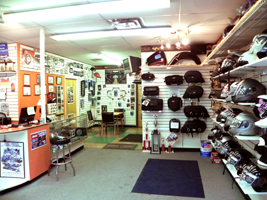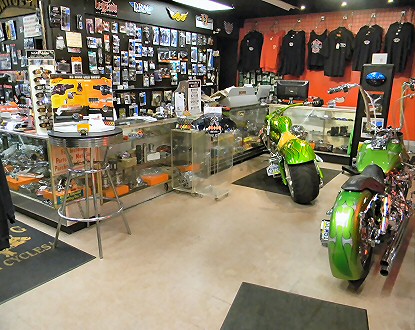Discover the most up to date Motocross Gear NZ for every single Degree of Rider
Discover the most up to date Motocross Gear NZ for every single Degree of Rider
Blog Article
Comprehending the Important Parts of a Motorcycle: A Comprehensive Guide for Enthusiasts
For motorbike fanatics aiming to elevate their riding experience and guarantee their bikes run efficiently, understanding the vital elements of a motorbike is critical. Each aspect, from the engine's detailed functions to the important duty of the braking devices, not only impacts performance but also safety and security and comfort. This guide will go through the basic parts that every biker ought to be familiar with, allowing educated selections in both upkeep and potential upgrades. As we begin this exploration, one must ask: exactly how does each element communicate to develop the smooth experience every lover seeks?
Engine Parts

The camshaft plays a vital duty in controlling the timing of the engine's shutoffs, making certain the precise opening and closing essential for effective gas and air intake, in addition to exhaust expulsion. This timing is essential to keeping optimal engine performance and performance. Furthermore, the carburetor or gas injection system, depending on the motorcycle version, is accountable for mixing air with gas in the appropriate ratio for burning.
The air conditioning system, either air or liquid-based, functions to preserve the engine's temperature level within functional restrictions, protecting against getting too hot and ensuring long life - mx gear nz. Each component, meticulously designed and integrated, adds to the smooth operation of the engine, specifying the bike's power output and general performance
Transmission System
Essential to the bike's capability, the transmission system ensures reliable power transfer from the engine to the wheels. This system consists of several crucial components, consisting of the clutch, gearbox, and final drive, each playing an important function in converting the engine's power into movement. The clutch, usually operated by a hand bar, offers to engage and disengage the engine from the transmission, permitting smooth equipment changes and controlled velocity.
The transmission, often referred to as the transmission correct, includes a set of gears that riders can manually shift with to change the bike's rate and torque output. These gears are prepared in a series that makes it possible for the motorbike to accelerate smoothly and keep optimal engine efficiency throughout various rates. A lot of motorbikes make use of a consecutive transmission, calling for the rider to shift gears in a fixed order.
Braking Systems
While recognizing the transmission system is crucial to using a motorbike's power, just as essential is the capability to manage and quit that power effectively, which is where stopping systems enter play. Brakes are vital for safety and security and efficiency, giving the motorcyclist with the needed control to browse different terrains and problems. Generally, bikes include two types of braking systems: disc brakes and drum brakes.
Disc brakes are a lot more widespread in modern-day motorbikes due to their remarkable performance. This system provides better heat dissipation, constant efficiency, and boosted quiting power, specifically in damp conditions.
Alternatively, drum brakes, though much less usual, are still located in some bikes. They work by pushing brake shoes against the internal surface area of a drum affixed to the wheel. While generally much less efficient in heat dissipation and stopping power, drum brakes are easier and more affordable.
Recognizing these braking systems' nuances enables bikers to maintain their bikes appropriately and appreciate the engineering that ensures secure and effective quiting.
Suspension and Steering
Suspension and steering systems are vital components that considerably influence a motorbike's handling and trip comfort. The shock absorber, consisting of forks at the front and shock absorbers at the back, takes in roadway irregularities, boosting stability and control. Front forks, normally telescopic or upside down, compress and rebound to mitigate impacts, while back shock absorbers maintain tire contact with the road, critical for traction and safety and security.
Steering, centered around the handlebars, attaches the biker click over here now to the bike's directional control. The guiding head bearings ensure smooth operation, permitting exact ability to move. Proper placement and maintenance of these bearings are important for predictable guiding action and decreasing rider exhaustion.
The suspension's adjustability is another essential aspect; preload, damping, and rebound settings enable modification to fit different riding designs and conditions. This flexibility is important for enhancing efficiency, whether browsing urban streets or dealing with sturdy trails. Advancements like digital shock absorber use real-time changes, boosting trip top quality throughout varied surfaces.

Electric Systems
After ensuring a regulated and smooth experience via reliable suspension and steering systems, attention turns to the electric systems, a critical element of contemporary official statement motorcycles. These systems play a critical function not just in beginning the engine but additionally in powering various parts that improve the functionality and security of the motorcycle.
At the heart of a motorcycle's electric system is the battery, which shops electrical power necessary for beginning the engine and powering supporting systems - moto parts nz. The generator or generator, paired with the rectifier-regulator, makes certain the battery continues to be charged while the bike functions, converting power into electric power and keeping voltage degrees
The ignition system, another important element, is liable for stiring up the air-fuel blend in the engine's cyndrical tubes. Modern bikes typically make use of a digital ignition system, offering higher effectiveness and dependability compared to standard systems.
Lights systems, including headlights, tail lights, and indications, are likewise crucial, guaranteeing presence and safety for the rider. Additional digital elements such as sensors, control units, and displays contribute to advanced attributes like fuel injection administration, anti-lock braking systems (ABDOMINAL MUSCLE), and digital control panels, better improving the riding experience.
Conclusion
A detailed comprehension of a bike's vital elements, consisting of the engine, transmission system, braking mechanisms, suspension, guiding, and electrical systems, is essential for enthusiasts aiming to enhance safety, performance, and convenience. Proficiency of these aspects permits educated choices relating to upkeep and upgrades, eventually enhancing the riding experience. By incorporating this knowledge, motorcyclists can guarantee their motorbikes run at peak performance and integrity, thus making the most of both satisfaction and durability of their vehicles.
For motorcycle fanatics looking to boost their riding experience and guarantee their bikes run efficiently, understanding the crucial parts of a motorbike is extremely important.Important to the motorbike's capability, the transmission system makes sure useful content efficient power transfer from the engine to the wheels.While understanding the transmission system is crucial to harnessing a bike's power, equally crucial is the capacity to manage and stop that power properly, which is where braking devices come right into play. Generally, motorcycles feature 2 kinds of stopping systems: disc brakes and drum brakes.
An extensive comprehension of a bike's essential parts, consisting of the engine, transmission system, stopping mechanisms, suspension, guiding, and electrical systems, is important for lovers aiming to enhance safety, performance, and comfort.
Report this page